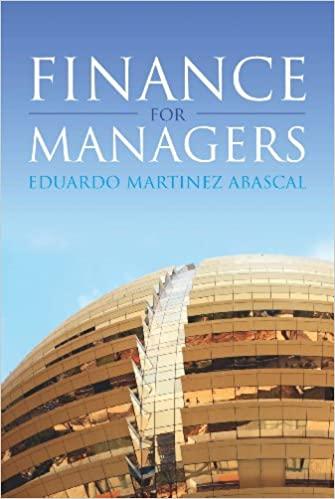Answered step by step
Verified Expert Solution
Question
1 Approved Answer
The Sonic Sound Company is based in the fictitious country of Audioland and uses the Audioland $ as its currency. It specialises in manufacturing and
The Sonic Sound Company is based in the fictitious country of Audioland and uses the Audioland $ as its currency. It specialises in manufacturing and selling speakers for audio equipment. It is currently considering investing in a new threeyear years project for a new product called Amp Arc. The product is a wireless amplifier for electric guitars. Thus far, the company has specialised in low volume, nichemarket products and this is its first venture into high volume standardtype products. The company has already spent $ million on researching and developing the product and intends to start production and sales on January Other details are:
Projected annual sales are forty thousand units in each year of the projects threeyear operational life.
The product will sell for $ for each unit, based on price values $ in
Variable costs are budgeted to be $ for each unit, based on price values $ in
The project will use part per cent of the companys existing factory building. This part of the factory building is currently being used on a project which will finish on December The entire factory building is currently rented at a cost of $ million annually as it has been for the past five years, and this rent should not, at least in principle, increase over the life of the new project, although the rental agreement is to be reviewed by the factory owner on December
The new project will use existing equipment purchased on January for $ million. This equipment has already been fully depreciated with $zero residual value and has already benefited fully from taxation capital allowances. It is still in good working condition.
The new project will also require the purchase of a new piece of equipment on December for $ million, with a useful production life of three years, depreciated for accounting purposes on a straightline basis, and with $ residual value on December the end of its useful threeyear year production life.
Assume annual taxation capital allowances on the new equipment are currently on a reducing balance basis.
The company anticipates being able to sell the rights to the manufacture and sales of the Amp Arc to another company in December for $ with the sale being concluded and cash received on December and with no tax payable on that value.
The project, as with each of the companys projects, will receive an annual company overhead charge of $ relating to the companys existing fixed overheads.
The project is likely to result in the companys additional annual fixed overheads of $ million in cash payments, based on price values $ in
The company supports projects by setting aside funds for working capital on an annual basis equivalent to of each of the next years sales value $ with that amount being set aside in advance of the following years sales.
Company taxation is annually and is paid one year in arrears. For ease of calculation assume that the tax rate is applied to each annual figure $ based on: sales $ minus variable costs $ minus incremental fixed costs $ associated with the project do not include annual working capital amounts in the taxation calculation.
In your calculations, show separately i the taxation payable on sales $ minus variable costs $ minus incremental fixed costs $ associated with the project, and ii tax savings arising from capital allowances.
The general annual inflation rate across the life of the project is forecast to be
The sales price $ of each unit is likely to be impacted by an annual inflation rate of in each year.
The variable cost $ of each unit is likely to be impacted by an annual inflation rate of in each of and after which the variable cost will stabilise.
The incremental fixed overheads arising from the new project are likely to be impacted by an annual inflation rate of in each year.
The company is funded by a combination of ordinary shareholders equity, a fixed interest rate bank loan, and a semivariable floating rate bank loan. Its weighted average cost of capital WACC as in February and unadjusted for inflation, is
The companys senior management team is of the opinion that the WACC figure will not be affected by inflation across the life of the project.
The company is aware that Audiolands central bank is concerned about what it perceives to be a high rate of general inflation and focus on interest rates.
Required: a prepare a schedule detailing the projects incremental cash flows the relevant costs associated with the proposed project overall and determine the net present value NPV of the project. B your views on the project based upon the calculations and NPV And how to take account on potential risks factor in this scenario?
Step by Step Solution
There are 3 Steps involved in it
Step: 1

Get Instant Access to Expert-Tailored Solutions
See step-by-step solutions with expert insights and AI powered tools for academic success
Step: 2

Step: 3

Ace Your Homework with AI
Get the answers you need in no time with our AI-driven, step-by-step assistance
Get Started


